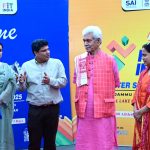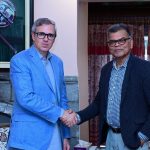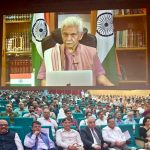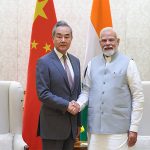In recent years, the healthcare system of the Union Territory of Jammu & Kashmir has undergone notable expansion, particularly with the establishment of new Government Medical Colleges across peripheral districts. This decentralization of medical education and care was envisioned to bridge long-standing gaps in access, equity, and infrastructure. Simultaneously, tertiary care facilities have also witnessed modernization. However, while the expansion is evident in part on the ground, the region continues to struggle with deep-rooted structural challenges that prevent quality healthcare from reaching every citizen.
The healthcare crisis in Jammu & Kashmir cannot be fixed through brick-and-mortar solutions alone. It demands visionary reforms, strategic collaborations, skilled human resources, technological integration—especially Artificial Intelligence (AI)—and, critically, a renewed focus on restoring public trust.
A Healthcare System Expanding, Yet Struggling
The establishment of new medical colleges in Anantnag, Baramulla, Doda, Kathua, Rajouri, and Handwara has been a welcome step. These institutions aim to democratize access to medical education and bring clinical care closer to underserved populations. However, the gap between infrastructure availability and functionality remains stark. Several colleges still operate in temporary buildings or under construction sites, lacking adequate facilities such as fully equipped operation theatres, trauma care units, ICUs, or diagnostic laboratories.
Patients continue to travel long distances to tertiary care hospitals in Srinagar or Jammu, overwhelming these centers and undermining the purpose of decentralization. This systemic dysfunction shows that healthcare access is not merely about physical structures but about functionality, consistency, and credibility.
The Human Resource Deficit: A Deep Structural Concern
Healthcare cannot be delivered by institutions alone; it is sustained by professionals—doctors, nurses, paramedics, technicians, and support staff. Yet, Jammu & Kashmir continues to grapple with a significant shortage of trained medical personnel, particularly specialists and skilled paramedical staff. The situation is more pronounced in rural and remote areas, where high attrition, poor working conditions, and lack of career incentives deter professionals from committing long-term.
The newly established medical colleges often function with skeletal staff and contractual appointments, undermining both education and patient care. A strong policy intervention is required to build and retain healthcare talent in the region. This includes timely recruitment, professional development opportunities, mentorship programs, and incentives for service in challenging geographies.
The Imperative of Integrating Artificial Intelligence in Healthcare
India’s AI initiative, aimed at harnessing artificial intelligence for national development, must extend robustly to healthcare in Jammu & Kashmir. AI presents a transformative opportunity to bridge the access divide, enhance diagnostics, improve patient management, and predict outbreaks through real-time analytics. In geographically difficult areas, AI can serve as a frontline tool where specialist doctors are unavailable.
Imagine a telemedicine platform that uses AI to analyze patient symptoms and connect them instantly to relevant experts or a machine-learning model trained to detect early signs of chronic illness in district hospitals. Such tools are not speculative—they exist, and their potential is immense.
However, for AI to be successful in healthcare, professionals must be trained to understand and implement it. The government should organize targeted workshops, certificate courses, and orientation programs for medical professionals, students, and administrators. AI literacy must become an essential competency in medical education. Collaborations with premier institutions like NITI Aayog’s AI think tank, ICMR, and IITs can help create a localized AI health framework for Jammu & Kashmir.
Misinformation: An Emerging Threat to Public Health
One of the most insidious challenges in today’s digital age is the rapid spread of health-related misinformation. Whether it is vaccine hesitancy, skepticism about public health policies, or panic during outbreaks, social media platforms have become fertile grounds for the dissemination of false narratives.
Healthcare professionals find themselves unfairly targeted, their credibility questioned, and their morale eroded. The good work being done in public health is often drowned out by online outrage or conspiracy theories. This not only harms public compliance with health programs but also destabilizes the fragile doctor-patient relationship that is central to effective healthcare.
The government must act swiftly to build a proactive health communication strategy. Hospitals and medical colleges should have trained Public Relations teams that engage with the public transparently, dispel myths, and deliver consistent, fact-based information. Collaborations with local influencers, educators, and journalists can help spread verified information at the grassroots level.
The Crisis of Commercialisation and the Trust Deficit
Another pressing issue is the commercialization of healthcare and the growing perception of healthcare as a profit-driven industry rather than a public service. Private hospitals, while crucial, are often seen as expensive and inaccessible. The public sector, meanwhile, is plagued with systemic inefficiencies, long waiting times, and limited transparency, compounding public frustration.
This environment has created a dangerous trust deficit. For many, the healthcare system no longer inspires confidence or assurance. Patients approach doctors with suspicion, and healthcare workers operate under increasing pressure and scrutiny.
Rebuilding this trust requires more than words. It demands a practical, empathy-driven approach. Government hospitals must become models of transparency and accountability. A patient-centered care philosophy must be adopted, and grievances must be addressed swiftly and fairly. Community health audits, patient feedback forums, and public town halls can bring citizens into the fold, making them partners in healthcare reform.
Toward a Practical, Future-Ready Health Policy for Jammu & Kashmir
Jammu & Kashmir’s unique challenges require a customized, practical, and strategic policy framework. One that does not replicate models from metropolitan India but is rooted in local realities and driven by global innovations. This future-ready health policy must prioritize:
Infrastructure Modernization: Fast-tracking the construction and equipping of medical college campuses and district hospitals.
Human Resource Development: Incentivizing rural service, fast-tracking recruitments, and building mentorship and residency programs.
AI in Healthcare: Launching UT-wide AI integration initiatives supported by training, pilot programs, and AI-driven diagnostic tools.
Health Communication Strategy: Establishing trained communication wings in hospitals to manage media, counter misinformation, and educate the public.
Trust Restoration Initiatives: Promoting ethics in care, institutional transparency, patient rights, and citizen participation.
This policy must not remain confined to paper. It should be supported by measurable milestones, periodic reviews, and most importantly, adequate funding and political will.
A Call to Action, Not Complacency
Jammu & Kashmir stands at a critical crossroads. The groundwork for a better healthcare system has been laid, but unless it is nurtured with strategic planning, technological integration, skilled personnel, and public trust, the progress will remain superficial. The citizens of this region deserve a healthcare system that is not just available but accessible, not just functional but compassionate, and not just expanding but evolving.
Healthcare cannot succeed in silos. It requires collaboration—between government, academia, technology providers, healthcare professionals, and the people. If the Union Territory of Jammu & Kashmir can rise to this challenge, it has the potential to emerge not just as a story of resilience but as a model of reformation and innovation for the rest of the country.
(Author is Currently working as Assistant Director Public Relations SKIMS/ SKIMS MC)









